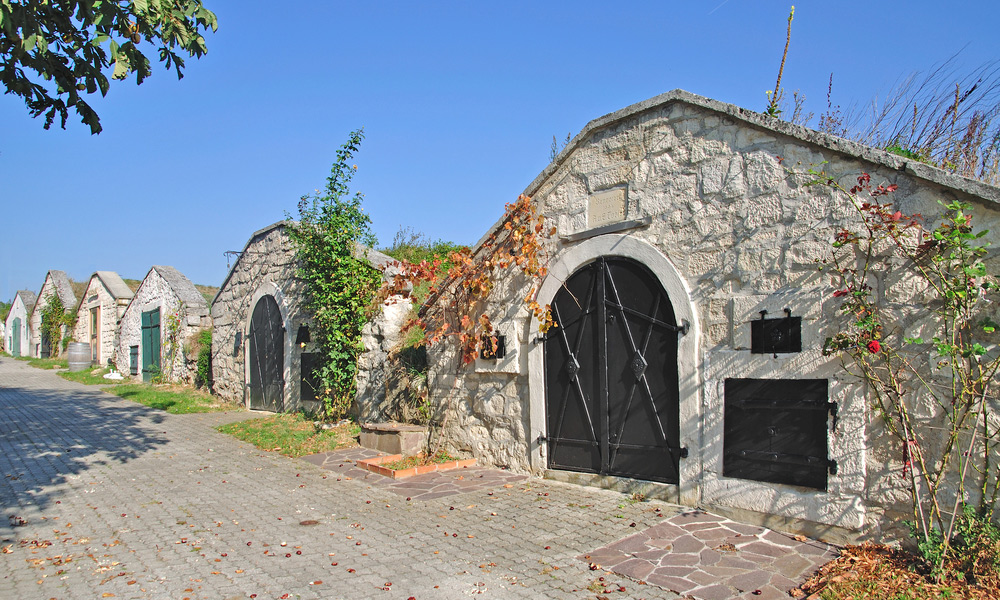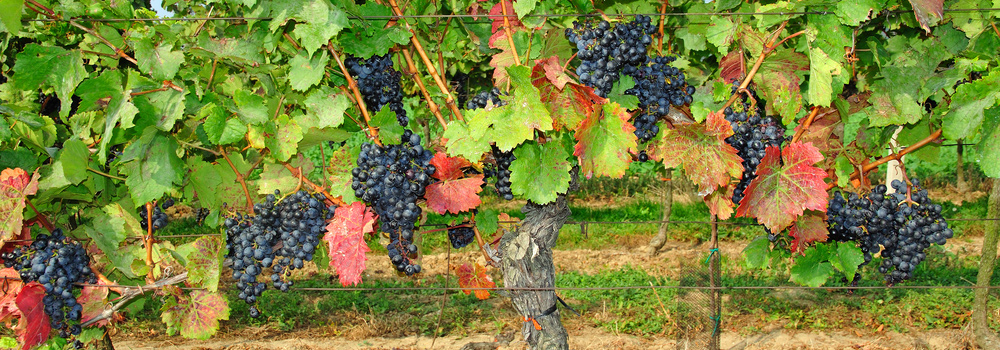Unlike grapes from Italy, France, and Spain that have found success in growing areas across the globe, Blaufränkisch has, for the most part, stayed close to its original home. Aside from a few acres planted in both old and new world regions, Blaufränkisch is mainly cultivated in Austria and is thought of as the Pinot Noir of Eastern Europe.
Blaufränkisch in 60 Seconds
- Blaufränkisch is a food-friendly, red wine.
- Blaufränkisch is a parent grape of both Gamay and Zweigelt.
- Depending on the country, Blaufränkisch is also known as Lemberger or Franconia.
- Blaufränkisch translates to “blue wine of Franconia”.
The Origins of Blaufränkisch
It’s believed that Blaufränkisch was drunk during the middle ages, although it doesn’t receive mention in published history until 1862. The majority of Blaufränkisch vineyards are found in eastern Austria, where most of the population live given the location of the Alps in the western part of the country. Most high quality versions of Blaufränkisch hail from regions along the border with Hungary, in Burgenland, where temperatures are just warm enough for the late-ripening grape. The climate here is akin to much of northern France, where cool-climates prevail with pockets that are ideal for growing grapes.
What Blaufränkisch Tastes Like
Despite the wine’s dark purple hue, Blaufränkisch is a light to medium-bodied wine with medium-high acidity and high levels of tannin . European versions are elegant and fruity with a smattering of black cherry and blackberry characteristics. Austrian winemakers produce mostly lean versions with herbaceous spice and an earthy finish. Producers in warmer climates like California and Australia (of which there are few) make a version comparable to Zinfandel with more compote-like fruit character, nuances of baking spice, and round, plush tannins. No matter its origin, Blaufränkisch is best after waiting a few years to allow the high tannin levels to mellow out. High-quality versions can rest in the cellar for up to 10 years.
Other Wine Growing Areas That Grow Blaufränkisch
In Germany, Blaufränkisch is known as Blauer Lemberger and is very similar in style to versions made in Austria. Other eastern European countries that produce Blaufränkisch include Hungary (where it’s called Kékfrankos), Slovenia (where the grape is known as Modra Frankinja), and Romania (where the grape is called Gamé).
In other parts of Europe, Blaufränkisch is found in Croatia. There, where it’s referred to as Frankovka, the grape accounts for nearly 3 percent of all vineyard plantings. In Italy, Blaufränkisch goes by the synonym Franconia Nera and is planted mostly in the northern region of Friuli-Venezia.

In North America, the grape is found across the United States including cooler areas like the Finger Lakes and Pennsylvania as well warmer climates like Lodi and Temecula Valley. In Canada, there are several plantings in British Columbia’s wine-growing region, the Okanagan Valley, in addition to the Niagara Peninsula in Ontario.
Foods To Pair With Blaufränkisch
Like some other world-renowned food pairings (coq au vin with Burgundy or paella with Rioja), Blaufränkisch shines when sipped alongside local regional specialities. Seek out authentic Vienna sausage and potato goulash from a local European market or be adventurous in your own kitchen by making wiener schnitzel, the Austrian version of fried chicken or pork.
If Austrian cuisine is a little too far outside of your comfort zone, Blaufränkisch is versatile enough to hold up to most kinds of meat. From poultry or duck to meatloaf or a hearty beef stew, Blaufränkisch is an exciting wine to try with pretty much any of your favorite dishes.
